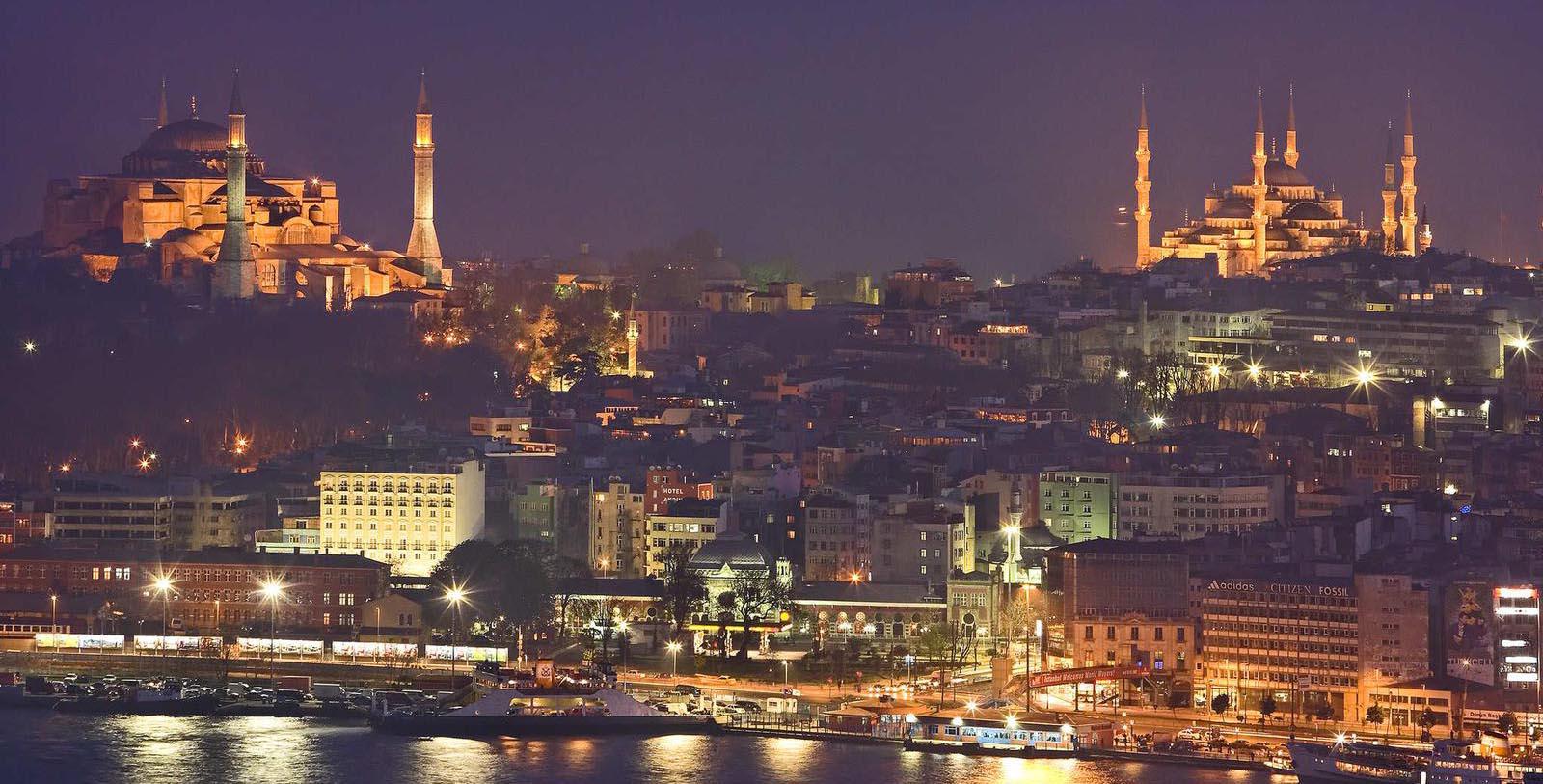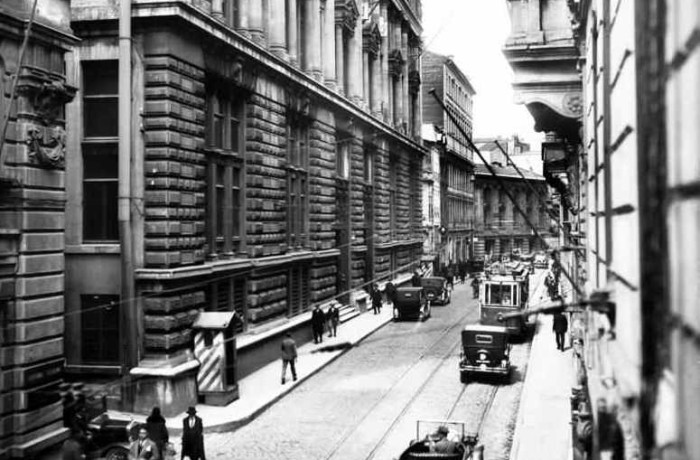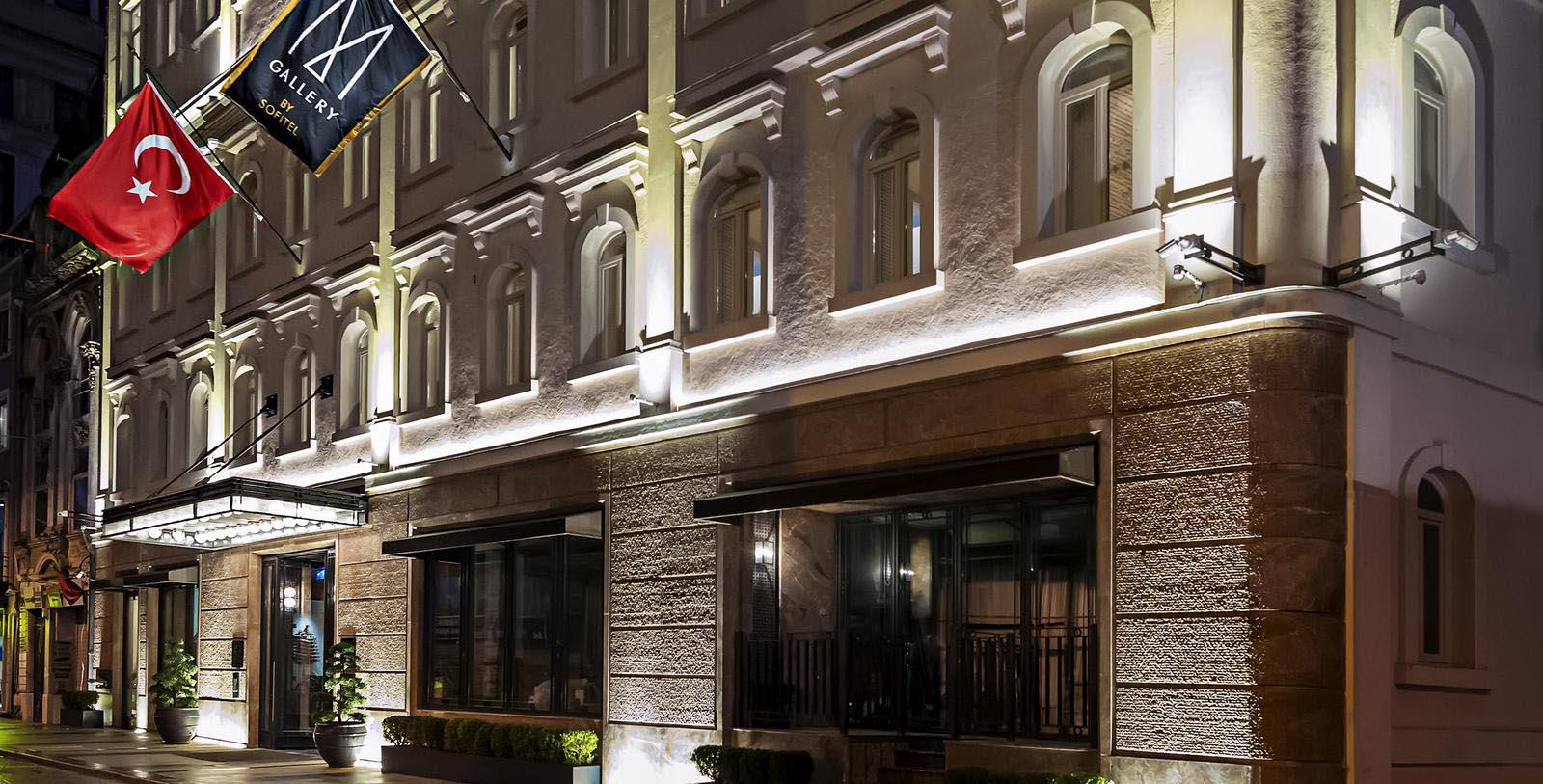Receive for Free - Discover & Explore eNewsletter monthly with advance notice of special offers, packages, and insider savings from 10% - 30% off Best Available Rates at selected hotels.
history
Discover The Galata Istanbul Hotel - MGallery by Sofitel, which was constituted from the historic Çeşme Hammam and Baltazzi family bank.
The Galata Istanbul Hotel - MGallery by Sofitel, a member of Historic Hotels Worldwide since 2018, dates back to 1720.
VIEW TIMELINEA member of Historic Hotels Worldwide since 2018, The Galata Istanbul Hotel - MGallery by Sofitel is comprised of several historic buildings. Its most historic structures date back to 1720 and 1836, respectively. The buildings were raised in the ancient settlement of Galata (which is now known as Karaköy) within the greater city of Istanbul. This area has hosted many different civilizations for more than a thousand years and is one of the most historic districts of the city. Kaymak Mustafa Pash, a captain of the Ottoman Navy, used the location to build a traditional Turkish bath house called the “Çeşme Hammam” in the early 18th century. Over the next century, Galata would transform into an international hub for banking due to the influx of many Greek, Italian, and French immigrants. In 1836, an Art Nouveau-style bank was constructed adjacent to the hammam by the Baltazzi family, who were notable financiers that had immigrated from Europe. The Baltazzi family and their bank, “La Banque de Constantinople,” assisted in funding trade during the final decades of the Ottoman Empire. Over time, the Ottoman even relied on the institution for some of its long-term loans. This original bank building is one of the most historic of its kind on Banks Street, which was once the financial center of the Ottoman Empire. In the late 19th century, a widespread calamity damaged many of the historic buildings in the Galata district; luckily, the bank and the hammam were left untouched. In 2017, AccorHotels combined the entire complex via a major renovation and hired the local studio Autoban to complete the new interior design. This revival transformed the historic buildings into the creative and warm hotel that exists today. In addition to the hotel accommodations, the Çeşme Hammam was restored using traditional Turkish construction techniques that revived the original feeling of the historic Turkish bathhouse. Now known as “The Galata Istanbul Hotel – MGallery by Sofitel,” this spectacular holiday destination continues to be one of the best available in all of Turkey.
-
About the Location +
Located along the northern shoreline the famed Golden Horn estuary, Galata is one of Istanbul’s most historic neighborhoods. Historical evidence is scarce in terms of when the area was first occupied, although scholars today can determine that it was once the home to many Grecian farmers and ranchers in antiquity. The inhabitants relied on agriculture to make a living, specializing in cultivating fig orchards and rearing cattle. In fact, the original names for the region—ranging from “Pera” and “Sykai”—were overtures to the land’s original bucolic character. For centuries, the site of modern-day Galata remained sparsely populated with farmers and ranchers, despite the rise of a major seaport named “Byzantium” nearby. But the locale became more closely connected to Byzantium over time, especially once the Roman Emperor Septimus Severus conquered the latter in the 1st century BC. (The city itself had been invaded many times before, having been besieged by the likes of the Persians, the Macedonians, and the Spartans.) In the wake of Rome’s conquest, Byzantium emerged as one of the most integral centers for trade within the ancient empire. Its proximity between the Black Sea and Mediterranean basin made it a popular destination on the legendary Silk Road, as many merchants from across the globe sought to ship their goods to the locale. Its importance within the Roman Empire led to subsequent emperors enlarging the city dramatically over the next several centuries, culminating with Emperor Constantine’s complete renovation of the metropolis in 425 AD.
Rechristened as the city of “Constantinople,” it continued to serve as one of the busiest ports on the Mediterranean. In fact, Constantinople became the capital for the Byzantine Empire that formed following Rome’s collapse. Much of the countryside around Byzantium morphed into sprawling suburbs, as such, including the site of Galata. And like most of the nearby communities, Galata evenutally became a part of the new Constantinople as its 13th district. Greatly influencing this transformation were Genoese traders, who relied on Constantinople’s deep natural harbor to protect their commerce ships. Indeed, the area had become so densely populated by Italian entrepreneurs that Galata essentially functioned as a semi-autonomous settlement by the height of the Middle Ages. The resident Italians pooled their resources to reinforce the neighborhood themselves, building a series of walls around Galata. They even renovated an imposing parapet that dated back to the time of the Romans that is known today as “Galata Tower.” But Galata’s population also grew to feature another demographic of people: Jews. Originally from Anatolia and western Europe, Galata’s medieval Jewish community flooded into the region due to its great economic opportunities. Despite periods of persecution, the Jews in Galata lived in relative peace and prospered significantly. Together with the Christian immigrants from elsewhere in the world, the local Jewish community helped create a cosmopolitan atmosphere that lasted for generations.
Galata’s prosperity ended abruptly at the start of the 13th century, though, when Pope Innocent III’s Fourth Crusade sacked Constantinople. Although originally meant to serve as an invasion force aimed at retaking Jerusalem, the crusaders ultimately besieged Constantinople as part of a deal with the Republic of Venice for travel across the Mediterranean. Since most of Galata’s foreign population at the time were resident Genoans, many of its inhabitants lost everything to the rival Venetians. Constantinople, thus, remained a shadow of its former self, until Mehmed the Conqueror seized the city and made it the capital of the new Ottoman Empire in 1453. A new influx of Islamic Turks flooded all over Constantinople—subsequently renamed as “Istanbul”—including the district of Galata. But while the Turks quickly accounted for nearly half of its population, the neighborhood still maintained high numbers of migrants from both Europe and the Near East. As such, Galata preserved its strong multiethnic identity for centuries afterward, giving rise to a beautiful blend of local architecture that still exists today. This peculiar cross-cultural intermingling also helped give rise to a vibrant economy, especially a robust financial sector. Those financial institutions developed significant political connections, too, evenutally courting prominent politicians within the Ottoman government. Some banks even lent out personal loans to the ruling Ottomans by the end of the 19th century! Today, Galata is known as the neighborhood of “Karaköy,” which is celebrated throughout modern Istanbul for its fantastic cultural attractions. Some of the best landmarks in the city are just moments away, like the Dolmabahçe Sarayı (Dolmabahçe Palace), the Sultan Ahmet Camii (The Blue Mosque), and the Hagia Sophia.
-
About the Architecture +
The current iteration of The Galata Istanbul Hotel – MGallery by Sofitel displays some of the finest Art Nouveau architecture in all of Istanbul. Part of the greater cultural phenomenon known as the “Belle Époque,” Art Nouveau architecture was among the most popular styles in Europe and the rest of the world from the 1890s until the outbreak of the First World War. It quickly appeared all over the globe, referred to by such names like “Glasgow Style,” “Modern Style,” and “Sezessionsstil.” And some of the most prominent architectural minds at the time employed Art Nouveau architecture, too. Perhaps the one of the greatest examples in the world was Hector Guimard’s wonderful Castel Béranger in Paris, France. The term itself was derived from an article published in the L’Art Moderne to introduce the work of architectural collective Les Vingt toward the end of the 19th century. Architects who embraced the Art Nouveau were among a growing demographic of intellectuals that yearned to create novel artistic forms that broke with the imitative historicism of the past. More importantly, they wanted their new architectural motifs to reflect imaginative creativity, especially as European society became increasingly more structured and industrialized. Over time, those professionals created a design aesthetic characterized by its curvaceous lines and use of organic shapes. Objects from nature were featured prominently throughout the façade of every structure, too, including the likes of insects and exotic plants. Surfaces often contained terra cotta coverings, and ornate tile moldings spread throughout the interior. Sloped arches also defined the windows and doors, while fantastic mosaics existed on nearly every ceiling. Asymmetrical layouts structured many Art Nouveau buildings, as well, providing a unique appearance in most of the world’s major cities. Art Nouveau architecture was eventually phased out during the 1920s in favor of a new style known as “Art Deco.” Its emphasis on modernity seemed to better represent the contemporary ideas of progress and modernity in the aftermath of World War I.





























